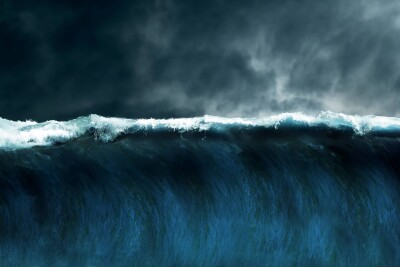As I get ready to take off for Japan, where they’ve experienced the worse of all natural disasters, we’re here in the US experiencing a bit of mother nature’s fury as well, as the Mississippi River overflows and residents are being chased from their homes and experiencing water-fueled destruction. Obviously, the two situations aren’t quite comparable, but it’s a reminder, yet again, that so many people are just one act of nature away from complete upheaval.
The allure of technology is that we could possibly use it to mitigate some of that upheaval. In our little sector of the technology universe, some stories have been popping up about how lidar is being used to respond to the flooding, so I thought I’d pass those along.
In Louisiana, where they clearly know a thing or two about flooding, I picked up a report from the Tri-Parish Times about the Army Corps of Engineers using lidar data to create elevation maps to better know how and where to respond to flooding. Lafourche Parish, in New Orleans, has declared a state of emergency in anticipation of the opening of the Morganza Spillway, which could lead to major flood impact:
The state of emergency declaration came in response to maps released this past weekend by the U.S. Army Corps of Engineers. The color-coded map indicates that parts of Lafourche Parish could have between 5 and 10 feet of water inundation and portrays the eastern banks of Bayou Lafourche to be in a 0- to 5-foot zone.
Unfortunately, there’s some disagreement about whether these maps are helpful. In effect, the maps are correct, but not accurate, if that makes any sense. Apparently the Army Corps didn’t take into account for levees and pump systems that are in place. Maybe. I don’t want to get in the middle of it. But here’s the part about lidar:
When designing the map, corps officials started with the Atchafalaya River in St. Mary Parish and worked east in determining water surface elevation levels. Along the Gulf Intracoastal Waterway (GIWW), the corps assumed a 5-foot water elevation near Morgan City and tabbed it at 3 feet near both Houma and Larose, Bourgeois said.
From there, the corps used the state LIDAR system to determine land surface elevations, and without taking ring levee and pump systems in the lower-lying areas of west Lafourche, combined the assumed water elevations with the believed land height.
That seems like a good system to me, but there may be some politics involved here that I’m not getting.
Elsewhere, I found a utility using lidar to make sure they can keep service up as much as possible in the Louisiana area:
Entergy Louisiana, LLC and Entergy Gulf States Louisiana, L.L.C. are prepared for predicted river level rises throughout the state and are encouraging customers in potentially affected areas to prepare while keeping safety as their top priority.
…
Entergy is working closely with local officials to constantly evaluate river levels and monitor transmission towers and lines over river crossings. Helicopter patrols are being made daily of watch areas along the Mississippi River and Atchafalaya Basin, and advanced Light Detection and Ranging (LiDAR) – a remote-sensing technology that measures distance using laser pulses to illuminate the target – is being utilized to confirm that there is a safe distance between the water and any energized conductors.
Entergy’s intent is to take every reasonable step to avoid interrupting service to areas not affected by flooding.
It’s great to see the 3D imaging community being able to help in the flood response. What are other ways we could be using this technology to help relief efforts? Is there an application for ground-based mobile mapping as well?
I’ll try to keep you posted on other things I find, but the trip to Japan is going to be a bit disruptive. See you there?





